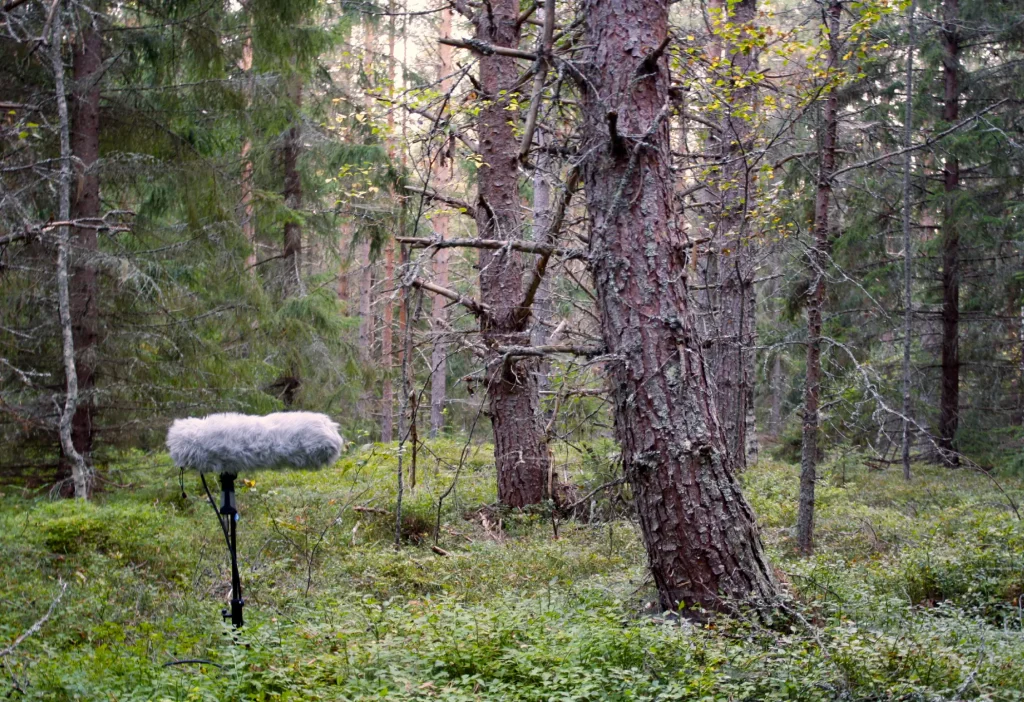
Listening to natural sounds, like birdsong or ocean waves, can work wonders for our well-being. These sounds help us relax and reduce stress, and research shows they can contribute to lowering cortisol levels, blood pressure, and heart rate. This leads us to feel calmer and more rejuvenated. Additionally, the benefits of natural sounds for well-being include making it easier to concentrate and think clearly, especially when we’re in urban environments where nature’s own sounds are often missing. Surrounding ourselves with these sounds can also improve sleep quality and boost our overall mental health. In short, natural sounds provide us with a simple and effective way to feel better both physically and mentally.
Our Connection to Natural Soundscapes
If we look back at human history, we’ve been shaped during a period where it was crucial to be present and live in harmony with our surroundings. Our survival simply depended on how well we could read our environment. Hearing was one of the most important senses, and it played a critical role in keeping us safe. In fact, the benefits of natural sounds for well-being extend back to our ancestors, who often relied on them for survival and a sense of security.
Natural Sounds as a Source of Calm and Security
The sounds around us also testify to safety and calm. They can speak of lush forests full of food; the birds’ song can hint at the absence of danger. The various soundscapes of the forest helped our ancestors navigate forward. So it’s not far-fetched to think that the benefits of natural sounds for well-being were deeply tied to a feeling of safety and calm. But what about us modern humans? How are we affected today by the sounds of nature?
Modern Life and the Impact of Natural Soundscapes
I dare say that this function is still active within us, even though we’re not as adept at understanding our senses as we once were. Perhaps, on an unconscious level, we still associate nature’s calm soundscapes with reassurance—the same soundscapes that our ancestors were familiar with. Today, the benefits of natural sounds for well-being continue to soothe us, even if we no longer live in the same environments.
Preserving the Benefits of Pure Natural Soundscapes
No matter how much we research and ponder, all that information is meaningless if we don’t know how we personally experience these sounds. Sadly, it is becoming harder to experience pure natural soundscapes in their original form because humans have spread out and polluted almost the entire planet with noise. This makes preserving the benefits of natural sounds for well-being even more important.
Eyra: A Solution for Experiencing Natural Sounds
This is one of the reasons why the idea of Eyra was born. I wanted to create a way for people to enjoy the benefits of natural sounds for well-being, free from noise pollution, as if we were hearing them in real time. I wanted to skip the process of having to search for nature sounds on Spotify or YouTube. Instead, I envisioned putting on a pair of headphones and immediately sinking into the pure, spontaneous, and—why not—magical world that nature offers when humans aren’t there to disturb.
Recording Natural Sounds
For about ten years now, I’ve been recording natural sounds and have collected many hours of material. For the past five years, I’ve regularly used a method called ”drop rigs.” This involves placing the recording equipment in a remote area and leaving it for about a day, then retrieving it once the batteries are dead. The advantage of this technique is that I don’t need to be present, allowing me to capture the most natural of sounds. By leaving the equipment alone, I can collect authentic recordings and, during the editing stage, am often surprised by the unexpected presence of animals around the microphones. These recordings further highlight the benefits of natural sounds for well-being in their most unaltered form. If you want to read more about field recording and also listen to some of my recordings, please visit my personal webpage here.